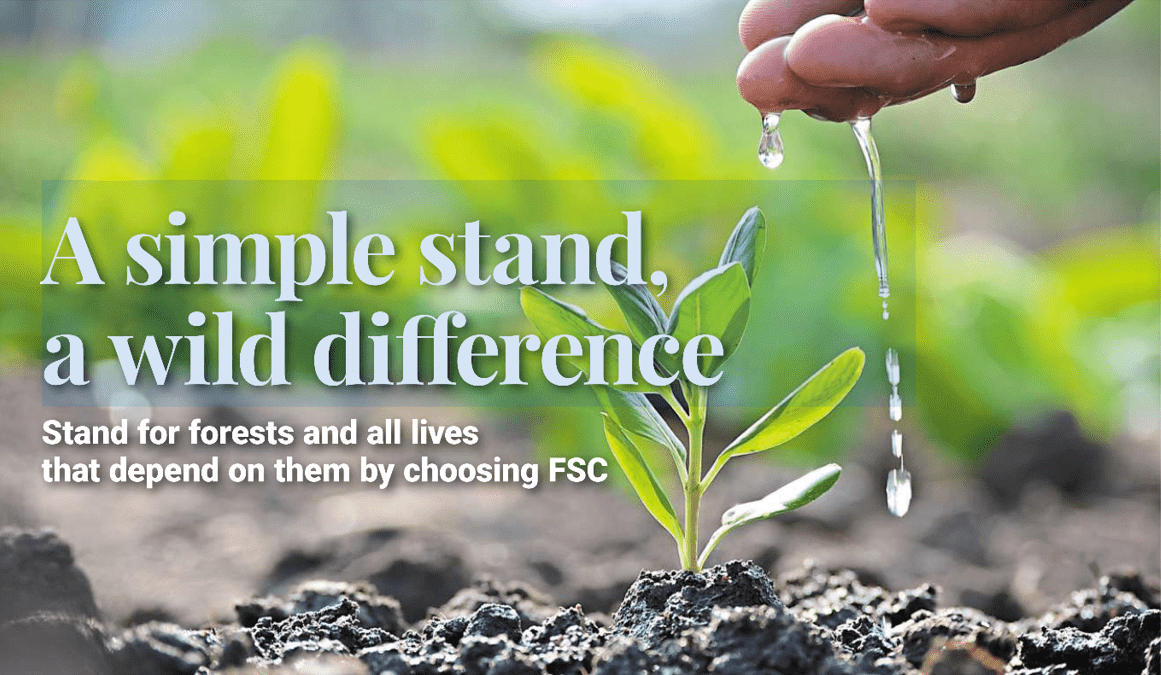
THERE IS a logo that looks like a combination of a checkmark and a tree. You usually spot it on the bottom of a drink carton, tissue paper, stationery, paper bags, plates and cups, books, price tags, yoga mats and these days, even car tyres. You can even see it on the labels of bedsheets, clothes and furniture.You may wonder, what does it stand for?
The FSC label is a proud mark of the Forest Stewardship Council (FSC), an international non-profit that is committed to promoting environmentally appropriate, socially beneficial, and economically viable management of the world’s forests.
It tells you that the product that you have purchased has been produced using forest products (timber and non-timber) from a responsibly managed forest, ensuring that its biodiversity is respected while providing social benefits to the communities that depend on it.
When you purchase FSC-labelled products, you’re helping forests thrive by supporting: (see Figure 1).
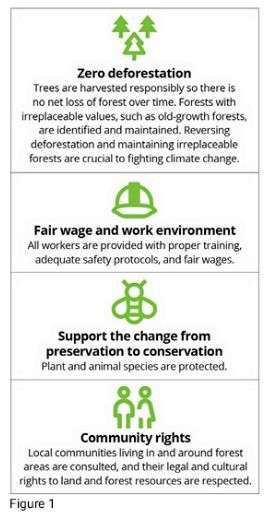
FSC certification is widely regarded as the world’s most rigorous and trusted forest certification and supported by leading environmental organisations worldwide.
The Work of FSC
Healthy forests help life on Earth thrive.
FSC – a non-profit organisation that covers more than 160 million hectares of certified forests – provides the world’s most credible sustainable forestry solution, trusted by non-governmental organisations (NGOs), consumers and businesses to help promote healthy and resilient forests, for all, forever.
Equally governed by environmental, social, and economic perspectives, FSC helps forest managers, smallholders, and governments ensure thriving forest ecosystems and safeguard the livelihoods of forest communities.
For nearly three decades, FSC has been advocating for a holistic approach towards the responsible use of forests.
FSC’s forestry standards, linked to a strict chain of custody certification, are a proven solution to fight the climate and biodiversity crises.
The FSC logo – found on millions of products worldwide – is the most recognised mark for responsible forestry.
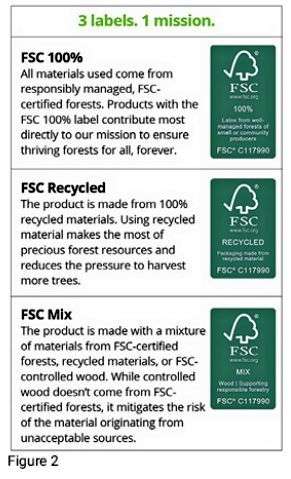
Essentially, FSC is a voluntary certification system that acts as an additional governing instrument for safe-guarding forest management practices and ensuring sustainability in supply chains.
FSC complements national and international policies and regulations for sustainable forest management in different countries. FSC is an effective tool for implementing strict practices which are proven to be a solution against deforestation and degradation – a major threat to biodiversity.
Deforestation takes place when forests are converted to non-forest uses, such as agriculture or urbanisation.
While forest degradation is changes within a natural forest or high conservation value (HCV) area that significantly and negatively affect its species composition, structure and function, and reduces the ecosystem’s capacity to supply products, support biodiversity or deliver ecosystem services.
The main drivers of global deforestation and degradation include conversion of forests for agriculture, infrastructure expansion, mining and unsustainable and illegal logging activities.
Providing solutions to combat deforestation through a set of rules that define responsible forest management is FSC’s response to the challenges that are posed by this growing demand.
FSC has several strict requirements in place to ensure that certified forest management units maintain the cover, biodiversity and productivity of forests. These include indicators for planning and monitoring forest management interventions, assessing risks and evaluating their impacts on forests, which are complemented by specific requirements for areas with HCV including intact forest landscapes.
This guarantees that activities in forests do not harm their biodiversity, while securing the essential needs as well as cultural and spiritual values of indigenous peoples and local communities.
The rules also prohibit the use of certain chemical pesticides while regulating the use of other pesticides as well as fertilisers, among many others.
FSC’s work addresses 40 targets under 14 of the 17 SDGs. FSC’s responsible forestry standard is particularly relevant to realising SDG 15: ‘Life on Land’.
The comprehensive economic, environmental and social approach to forest stewardship also contributes to SDGs focused on poverty, equality, natural resources, production and consumption patterns, decent work, climate change, inclusive and accountable societies, and global partnerships.
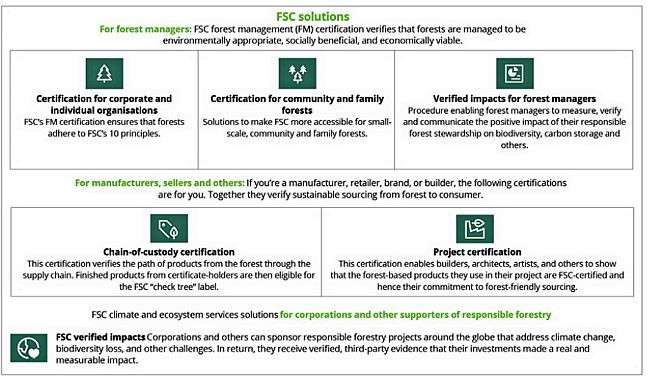
Navigating EUDR Compliance with FSC
In December 2022, the European Union (EU) reached an agreement on a new deforestation-free regulation (EUDR).
The regulation, which entered into effect on June 29, 2023, prohibits products linked to deforestation and forest degradation from being sold and exported to and from EU markets, covering a wide range of products including timber, rubber, soy, palm oil, coffee and beef.
As an official member of the EU Commission’s EUDR multi-stakeholder platform, FSC actively collaborated on this topic since its inception together with EU policymakers, NGOs, voluntary sustainability standards, and progressive companies.
FSC’s robust certifications already deliver on numerous EUDR requirements, and in many ways exceed its scope and ambitions.
FSC is developing a new solution, “EUDR Aligned”, set to be released by June this year to ensure stakeholders can fully comply within the EUDR timeframe.
This solution will guide stakeholders through the due diligence process and include a set of integrated tools to make it easier to comply in a clear three-step approach.
FSC continues to work on user-friendly technologies for field-testing that many organisations, especially smallholders, do not have access to.
The integration of these tools through FSC’s “EUDR Aligned” aims to alleviate concerns about accessibility, marking a positive step in strengthening and implementing these innovative solutions:
> As part of the technology stack within the existing FSC GIS Portal, satellite imagery and geographic information system (GIS) mapping are being extended to provide boundary data that meets the EUDR geolocation requirements.
> The FSC Blockchain solution is also being extended to offer supply chain traceability in line with EUDR requirements and ensuring sustainability in supply chains.
Multi-layered problems such as deforestation require a mix of approaches and the constructive collaboration of the various actors involved in this endeavour.
Promoting Restoration and Restitution
Since its establishment in 1994, FSC has created several mechanisms to restrict conversion of natural forests to plantations and non-forest use. Forest plantations which have been established by converting natural forests after 1994 have not been eligible for FSC certification.
This ‘1994 rule’ has since changed in 2022 when FSC members voted to amend the FSC Principles and Criteria to enable implementation of the new FSC Policy to Address Conversion (PAC).
The PAC now provides a pathway for forests converted between 1994 and 2020 to enter the FSC system, while the FSC Remedy Framework (RF) opens possibilities for the remedy of environmental and social harms as a requirement for becoming eligible into the FSC system.
Forest conversion is also addressed in the FSC Policy for Association (PfA) which defines six unacceptable activities, two of which relates to forest conversion and destruction of HCV.
The PfA is a unique tool that provides a pathway for taking action against companies who engage in destructive activities. FSC’s remedy and reform process requires organisations that have been removed from the FSC system for violating the PfA to make amends (through extensive collaboration and consultation) for the harm they have caused and permanently change the way they work in the future.
While conversion of natural forests must never be encouraged, incentivising owners of converted forests to follow higher environmental and social standards could result in greater forest protection.
With the new remedy requirements, FSC will be able to open past converted forests to the possibility of association and certification, as well as promote ecosystems restoration and restitution of social harms around the world.
FSC will continue working with governments, NGOs, social groups, local communities and businesses to address the roots of deforestation and degradation.
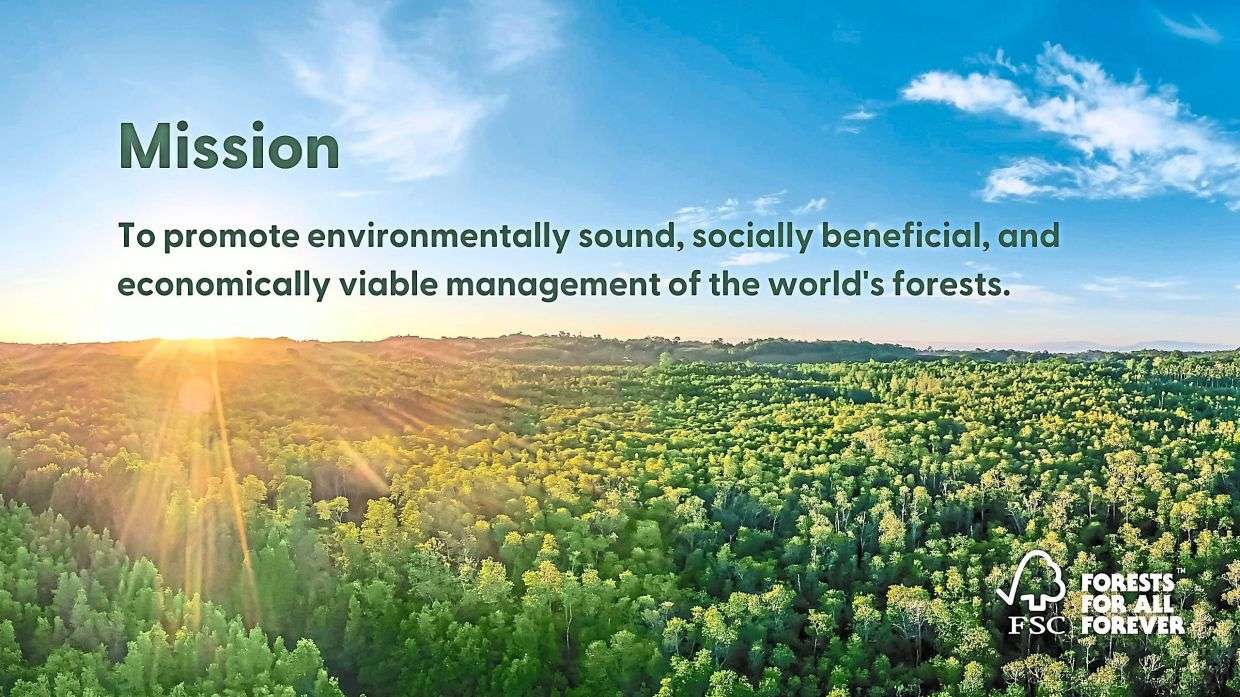
Setting the Bar for Responsible Forestry
Protecting forests starts with rigorous standards. As the pioneer of forest certification, the FSC sets the standard for responsible forest stewardship. FSC’s policies unify a diverse set of stakeholders around common guidelines for forestry that are:
> Environmentally appropriate.
> Socially beneficial.
> Economically viable.
Our open and transparent standards include safeguards to ensure that stakeholders throughout the forest supply chain live up to the principles that protect healthy and resilient forests for all, forever.
The 10 FSC Principles
FSC’s 10 principles are the foundation of our forestry standard. Developed to be relevant to different kinds of forest ecosystems and in diverse cultural, political and legal settings, they require any managers of certified forests to:
> Comply with all applicable laws;
> Maintain or improve the social and economic well-being of workers;
> Uphold the rights of indigenous peoples;
> Maintain or improve the social and economic well-being of local communities;
> Manage their products and services in a way that maintains or improves their long-term economic viability, social benefits and environmental benefits;
> Maintain, conserve and restore the ecosystem services and environmental values of managed forests; and also avoid, repair, or mitigate negative environmental impacts;
> Establish a management plan that outlines their economic, environmental, and social policies and objectives;
> Demonstrate progress toward meeting these objectives;
> Maintain or improve high conservation values;
> Ensure that all management activities comply with FSC principles and criteria.
Fair Forestry Standards for Everyone
FSC is committed to making responsible forestry attainable by all. FSC standards are locally adapted to address the on-the-ground realities of different regions.
In 2019, FSC Malaysia launched its first FSC National Forest Stewardship Standard (NFSS) of Malaysia based on FSC global principles and criteria, and subsequently published a revised version in 2022.
FSC also has solutions that make it easier for community-, family- and smallholders- managed forests to become FSC certified, including a portfolio of solutions and tools these managers can use to reduce the cost and complexity of certification and open the door to new market opportunities.
Safeguarding Integrity
Integrity guides everything we do. We take pride in our standing as the world’s most trusted certification system.
If anyone connected to the FSC violates our standards or is involved in destructive forestry activities, we take action.
Our rigorous investigation and reporting process includes the collaboration of accreditation partners, certification bodies, independent experts, NGOs and others.
It helps ensure that our standards are upheld, potential violations are thoroughly examined and bad actors are excluded from the system.Certification of forests and forest products is only valuable if it can be trusted which is why we’re committed to an open, transparent process for protecting the integrity of the FSC certification system.
This is to ensure that integrity is upheld beginning from forests themselves, all the way down the chain to consumers.
Our policies and procedures for safeguarding integrity are concentrated in three key areas:
> Unacceptable activities.
> Supply chain integrity.
> Trademark protection.
Supply Chain Certification and Trademark Use
Our certification system verifies sustainable sourcing of forest products and ecosystem services at every step of the value chain, from forest to consumer.
Chain-of-custody certification is how the FSC verifies that forest-based materials produced according to our rigorous standards are credibly used along the product’s path from the forest to becoming finished goods.
The FSC label on a finished product signals that the materials used during production have met the chain of custody requirements at every step in the supply chain, from sourcing to distribution.
Only products that have undergone a stringent audit process by independent accredited certification bodies in accordance to FSC standards will be granted FSC certification.
Join our mission to protect the world’s forests for all forever.
Charmaine Chee is FSC Malaysia country director. The views expressed here are the writer’s own.
For more information on FSC and FSC Malaysia, visit https://fsc.org/en and https://my.fsc.org/my-en
The article was first published here.
Photo by Photo Boards on Unsplash.

 3.0
3.0 













